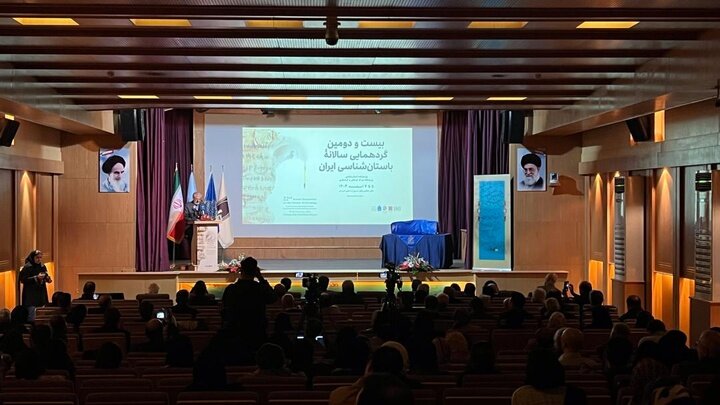Archaeology conference kicks off in Tehran

TEHRAN-The 22nd edition of the Annual Archaeology Conference commenced at the National Museum of Iran in Tehran on Sunday.
The conference opened with the presence of the Minister of Cultural Heritage, Tourism, and Handicrafts Seyyed Reza Salehi-Amiri, as well as Mohammad Ebrahim Zarei, the head of Iran's Research Institute of Cultural Heritage and Tourism, Mohammad Beheshti, the former director of the institute and a select group of prominent professors and veterans in archaeology, CHTN reported.
Speaking at the ceremony, Jebrael Nokandeh, director of the National Museum of Iran welcomed the attendees and highlighted the conference as an opportunity for the exchange of ideas and scientific collaboration among archaeologists.
He also mentioned an exhibition showcasing selected findings from archaeological research conducted in Iran in 2023, featuring 273 artifacts unearthed from 13 archaeological sites. This exhibition will be open until April 19.
During the ceremony, a book compiling articles from the 22nd Annual Archaeology Conference was unveiled, along with a summary of findings from archaeological research in Iran for 2023, an archaeology journal, and ten archaeology reports.
Additionally, the exhibition of selected findings from the 2023 archaeological fieldwork in Iran was inaugurated in the presence of Seyyed Reza Salehi-Amiri.
Archaeology in Iran boasts a rich and diverse history, reflecting the complex tapestry of civilizations that have inhabited the region for thousands of years. As one of the cradles of human civilization, Iran's archaeological landscape is replete with significant sites that offer insights into ancient cultures, trade routes, and the development of urban centers.
One of the most notable archaeological sites in Iran is Persepolis, the ceremonial capital of the Achaemenid Empire. Recognized as a UNESCO World Heritage site, Persepolis showcases magnificent palaces, monumental staircases, and intricate reliefs that depict the grandeur of Persian culture and its architectural achievements.
Excavations at this site have revealed valuable artifacts, including inscriptions, pottery, and precious metals, shedding light on the political and social structure of ancient Persia.
Another critical area of archaeological interest is the Zagros Mountains, where early human settlements date back to the Paleolithic period. Some of these sites are pivotal for understanding the transition from nomadic lifestyles to settled agriculture, as well as the development of complex societies during the Neolithic era.
Additionally, Iran’s archaeological pursuits have unveiled the significance of the Silk Road, which facilitated trade and cultural exchanges between the East and West. The discovery of caravanserais, ancient fortresses, and intricate pottery illustrates Iran's role as a hub in this extensive network.
Research in Iranian archaeology has faced challenges, including fluctuating funding for the preservation of historical sites. However, the commitment of local scholars and international collaborations continues to foster advancements in the field.
Modern archaeological practices involve the use of technology such as satellite imagery and remote sensing, enhancing the exploration and documentation of Iran's extensive archaeological heritage.
Archaeology in Iran is vital in reconstructing the narratives of ancient civilizations, highlighting the region's historical significance and the enduring legacy of its cultural heritage.
SAB/
